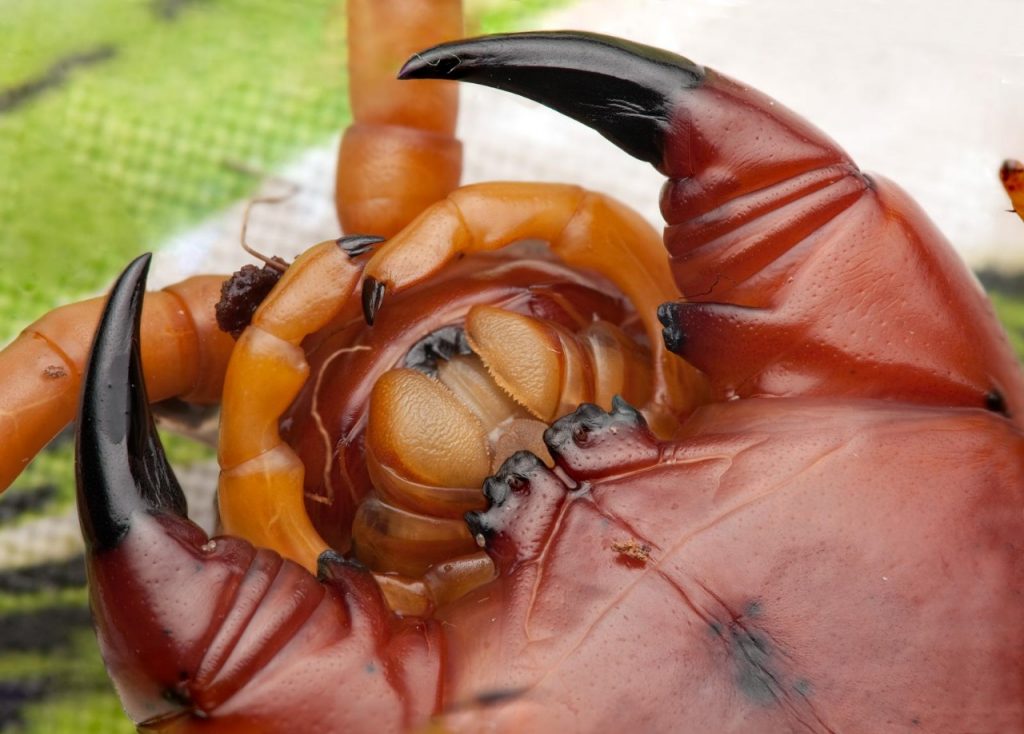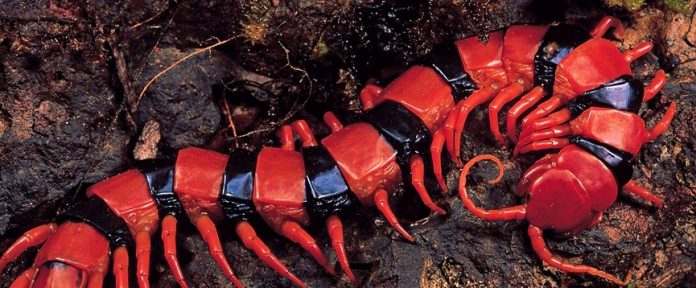Cover image credit: A Captain and S Mukherjee
Imagine a travel in the rainforest, you come across a painful sting, probably bitten by any venomous animal. What “guess- animal” comes in mind? Snakes? Scorpion? Spiders? And….?
If you have struggled to come up with other options, this lack of imagination is understandable. Our knowledge and information about the world of venomous animals is rather limited.
The animal kingdom contains a vast majority of venomous animals around us. They use venom for a variety of purposes such as predation, defense, inter- specific competition and so on. However surprising as it may seem, only a handful of venomous groups have been studied. This largely includes animals like snakes, cone snails, scorpions, spiders, which are more acquainted with humans. It can be evidently visualised by the quanta of research works done in the field of venomous taxa around. While around 220 species of venomous snakes, 81 species of spiders, 37 species of cone snails have been studied and investigated across the globe, many remain unexplored, waiting to be studied and understood in detail.
One such group of venomous taxa that our lab studies is centipedes or the numerous legged “creepy- crawlies” that are a common sight in our homes, especially spotted during monsoons. All known centipedes are venomous. They use their venom for predation and possibly also a tool for maternal care to protect their young ones.
Centipedes are found all across the globe, except Antarctica, with more than 3500 species worldwide, constituting of five major groups or orders. The ancient literatures by Acharya Susruta refers the bites of centipedes as ‘Shatpadidansha’, or the venomous bite of one of the oldest venomous animals across the world. These are the only animals whose first pair of legs has evolved as the venom injecting tool. Hence, they are also considered as an evolutionary novelty from the research point of view.

Centipedes are the top-tier soil carnivores. Centipede bites are not rare to observe, and humans being affected by centipede stings is a common sighting. Their venom contains a cocktail of neurotoxic and cytotoxic proteins and peptides, and causes a diverse range of symptoms. These include extreme local pain in at the site of sting, chills, fever, weakness, inflammation, numbing and tingling sensation of skin, allergy, local haemorrhage, superficial necrosis (tissue death) etc. Apart from these commonly observed symptoms, some rare occurrences of severe symptoms include heart failure, blood in urine, life threatening haemorrhage and even life-threatening allergic reactions, sometimes in conjunction with organ failure.
The occurrence of fatal incidents is generally rare. However, a couple of isolated interactions in ssome South East Asian countries have shown to be associated with fatalities. Often these fatalities are observed in persons that have co-morbidities involved such as high blood pressure, heart risks, etc.
But there is more to centipede venom. It has gained the curious eyes of researchers worldwide also for their immense pharmaceutical potential such as in cancer therapy and antimicrobials. One interesting example of such a peptide is Scolopin- 2, that has shown kill the hepatic cancer cells in-vitro. Another example is a peptide derived from one species of centipedes, Scolopendra subspinipes mutilans, that has been shown to harbour anticoagulant activity in both in-vitro and mouse models.
The importance of centipede venoms is also evidently seen in medicinal folklores. The venom of these terrestrial arthropods has been used extensively in ancient Chinese traditional medicine, as well as in the folk medicine of Korea and other countries in East Asia to treat many disorders since many years. This includes diseases such as stroke, hemiplegia, epilepsy, cough, tetanus, burns, cardiovascular diseases, among many others such as problems of joints, legs, tumours, cough etc. However, the actual active ingredient in the venom that responsible for these medicinal properties is yet to be explored.
Most of the centipede species have a smaller body size than some commonly explored groups of venomous animals such as snakes. This accounts for the fact that extracting their venoms for a detailed characterization can be very time consuming, with small volumes available during each milking for analysis. Thus, unlike snake venom, the research on centipede venom has stayed more uncommon because of this difficulty in extracting the venom, coupled with the paucity of analytical research infrastructure to analyse these small quantities.
While there are many questions about centipede venom that need to be addressed, the Indian subcontinent is a centipede researcher’s paradise. It is the residing place for many endemic species of centipedes, giving an excellent backdrop to address unique questions in fields such as evolutionary biology, ecology and molecular biology using centipede venoms as their model system. .
So, the next time you spot a creepy crawlie in the forest, protect yourself from the sting, also acknowledge the existential and diverse cocktail of their venoms and the components that can also evade you from many painful interactions in the future, if used right. Let the scientist in you ponder on the marvel that it is!


